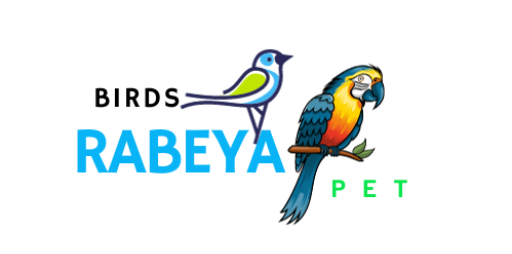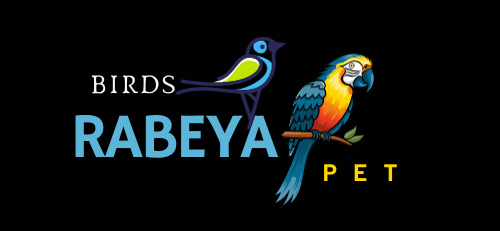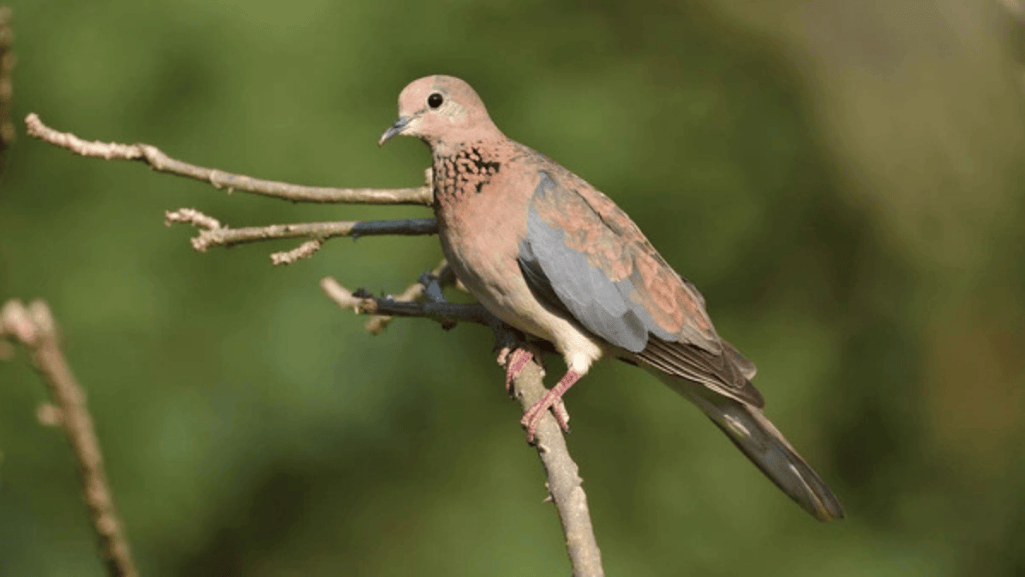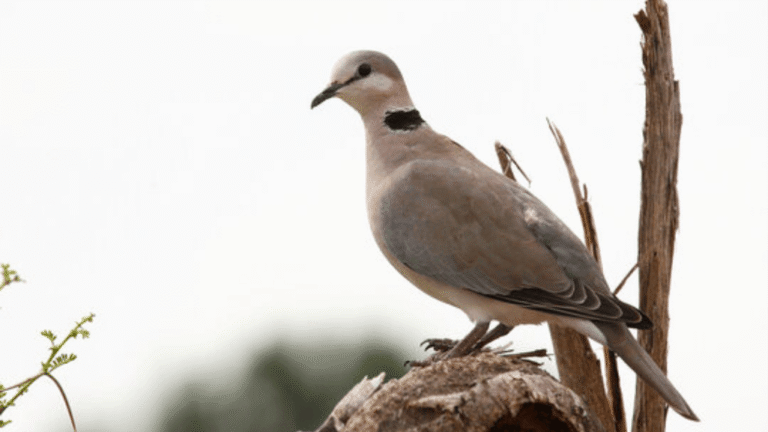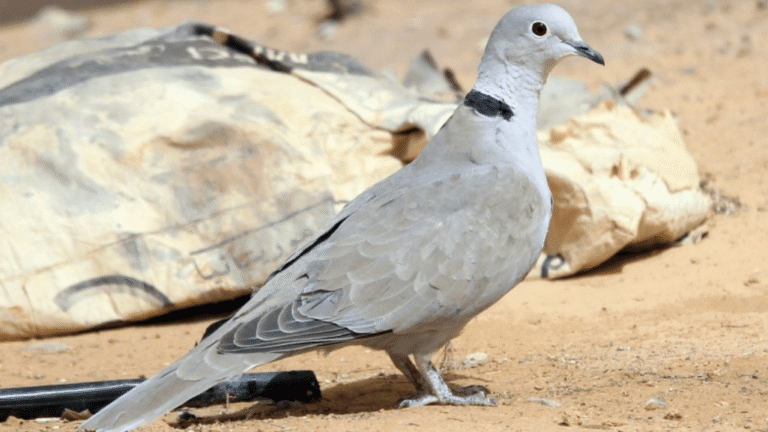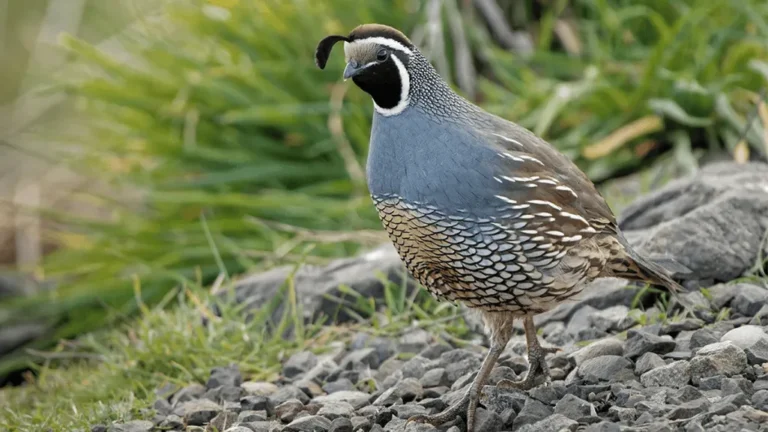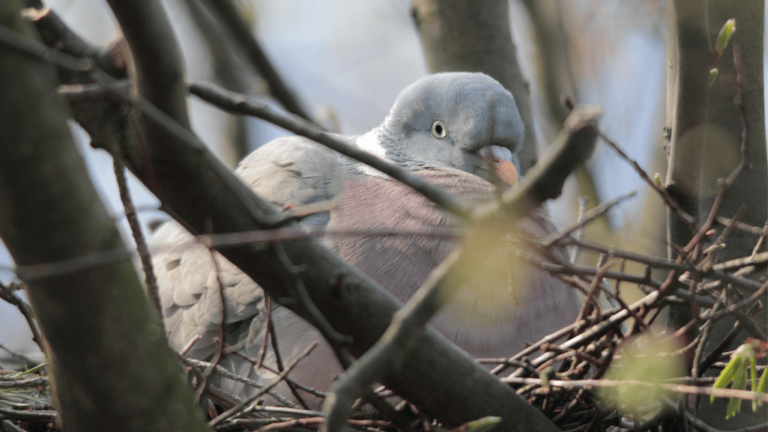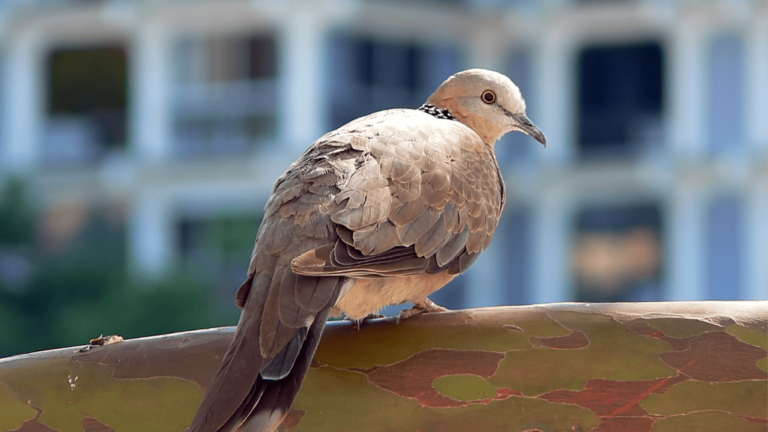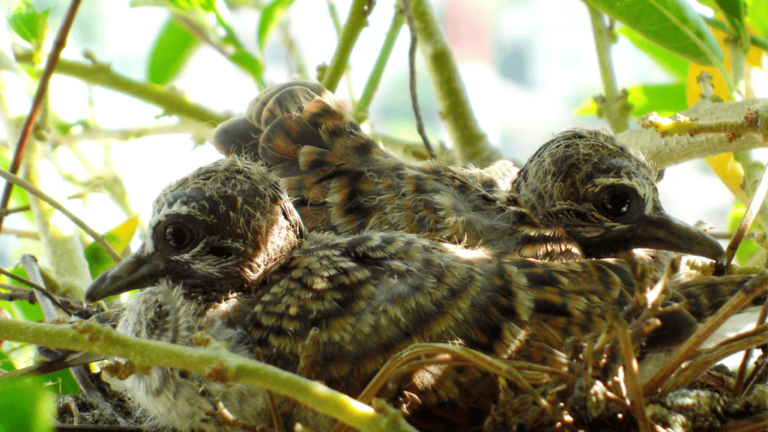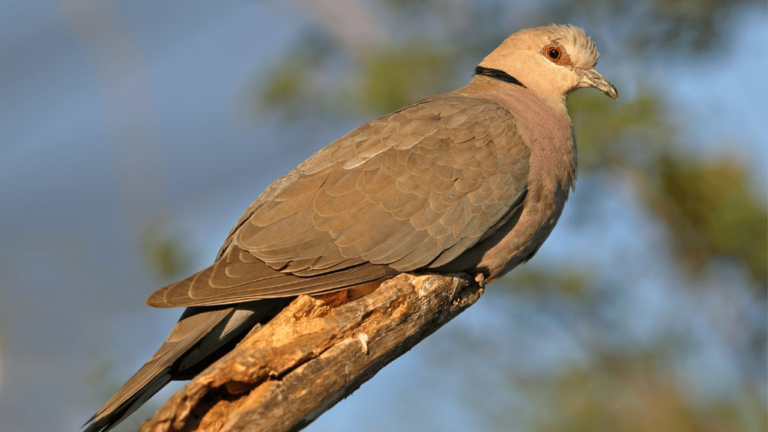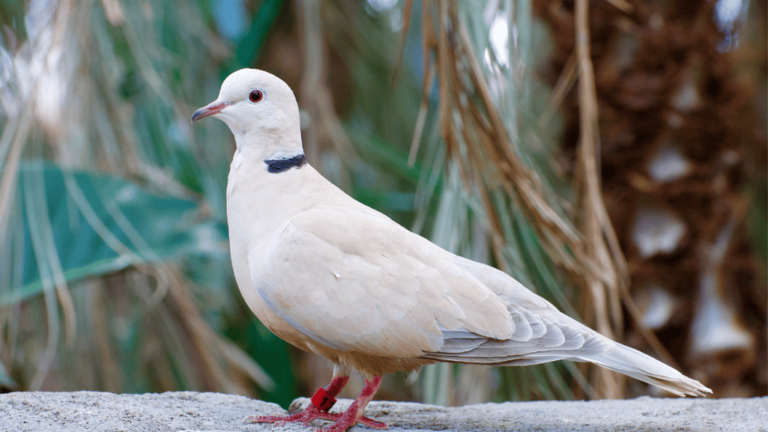The African turtledove (Turtur afer) is a graceful bird prized for its calm beauty and soft purring song. Often seen in pairs, these doves embody quiet companionship in African woodlands and savannas. Note: the common name “turtle dove” more properly refers to Streptopelia turtur, a different species in the same pigeon and dove family (see species accounts for distinctions).
Artists such as Edward Lear and other natural history illustrators have celebrated the Turtur afer’s subtle plumage and elegant form; its feathers and patterns have long inspired paintings, engravings, and contemporary wildlife photography.
Key Takeaways
The African Turtledove is a distinctive bird species valued for its serene presence and soft song.
It is taxonomically distinct from the European “turtle dove” (Streptopelia turtur), though they share a family.
Its attractive plumage and quiet behavior have made it a recurring subject in art and natural history illustration.
Learn more about its status and conservation efforts in the Conservation section below.
An Introduction to Turtur afer
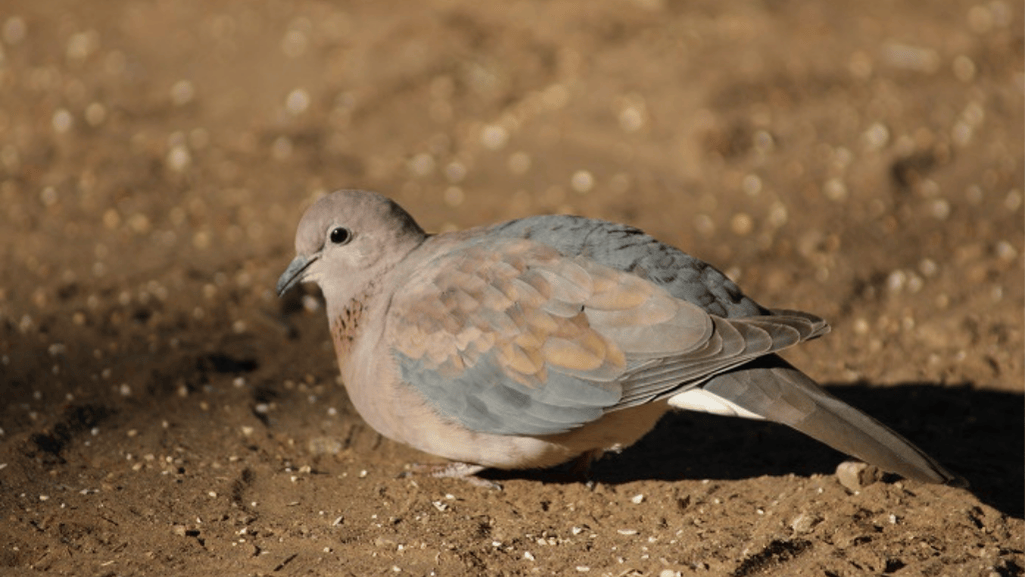 The Turtur afer, commonly called the African Turtledove, is noted for its soft purring calls—often rendered as “turr‑turr”—a signature song that helps with identification in the field. Though small compared with many members of the pigeons and doves family, this species undertakes local movements and some longer flights between seasonal areas in parts of its range.
The Turtur afer, commonly called the African Turtledove, is noted for its soft purring calls—often rendered as “turr‑turr”—a signature song that helps with identification in the field. Though small compared with many members of the pigeons and doves family, this species undertakes local movements and some longer flights between seasonal areas in parts of its range.
Identification at a glance: the African turtledove is compact with muted, mottled plumage that provides camouflage at woodland edges. It can be confused with other doves such as the Blue‑spotted Wood Dove and the Tambourine Dove, so look for its particular combination of size, patterning, and the characteristic purring song.
Quick ID checklist
– Size: relatively small for a dove (compact body).
– Plumage: subtle mottling and earthy tones that blend with bush and savanna.
– Song: soft purring call, “turr‑turr,” used in contact and courtship.
– Similar species: compare with Blue‑spotted Wood Dove and Tambourine Dove by pattern and call.
Status and populations
Some local populations have declined in parts of their range, prompting conservation attention. Check the IUCN Red List and BirdLife International species account for up‑to‑date status and country‑level trends, and be careful when interpreting historical local sightings (reports from places like Staverton and Hickling require verification to confirm species identity and dates).
Understanding basic Turtur afer facts—its song, flight behavior, and habitat needs—helps researchers and birdwatchers monitor populations and support conservation efforts so future generations can continue to hear this gentle song in the wild.
Turtur Afer’s Habitat: Embracing Adaptability
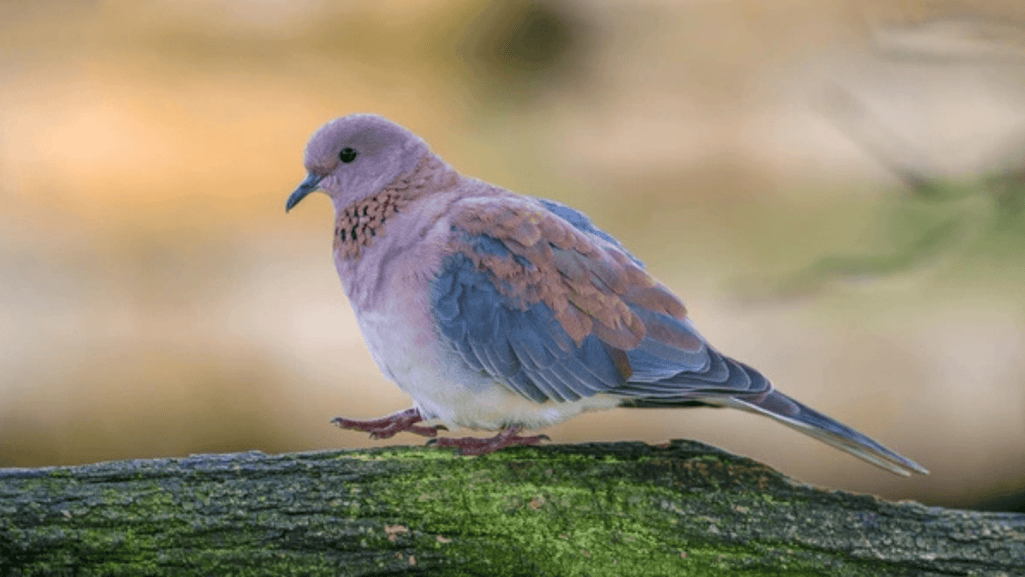 The Turtur afer, or African turtledove, is a broadly adaptable dove that occupies a range of habitats across its African range. Its flexibility in habitat choice—woodland edges, bushland, savanna and parkland—helps the species persist where other birds may struggle.
The Turtur afer, or African turtledove, is a broadly adaptable dove that occupies a range of habitats across its African range. Its flexibility in habitat choice—woodland edges, bushland, savanna and parkland—helps the species persist where other birds may struggle.
This species is commonly recorded from sub‑Saharan woodlands and open savannas to more wooded agricultural mosaics in southern Africa. Turtur afer often favors forest edges and scrub where seeds and small fruit are available, but it also uses drier fields and bush during nonbreeding periods.
The Varied Landscapes of the African Turtledove
Across its range the African turtledove uses a mix of habitats rather than a single strict niche. Authoritative datasets (BirdLife International, eBird) and regional field guides show the species in woodland‑savanna mosaics, riparian strips, and secondary growth—habitats that provide both seeds and shelter.
Regional Differences in Habitat Preferences
In some regions Turtur afer is closely associated with woodlands and stays nearer to water during the breeding season to access food and to provision chicks; in other areas (especially drier zones) it frequents open fields and scrub. These regional differences underline the importance of conserving a variety of habitats—wetland margins, woodland edges, and seed‑rich grassland patches—to support local populations.
Where to see it: look for Turtur afer at woodland edges, riverine scrub, and farm margins in southern Africa and across sub‑Saharan Africa during early morning and late afternoon when feeding on seeds and fallen fruit.
Mysteries of Turtur Afer: Understanding their Mating Behavior
The Turtur afer, or African turtledove, engages in subtle courtship that combines soft purring sounds with modest flight displays and gentle fluttering. These behaviors help form and maintain pair bonds and signal readiness to mate; observers typically hear the characteristic purring call before seeing any display flight.
Comparative studies of dove mating systems (including related species) help place Turtur afer behavior in context. For example, research on the Eurasian Collared Dove and Streptopelia species shows a range of display types—wing‑clapping, flight displays, and fluttering—that reflect adaptations to local environments and social systems. Careful field observation and source citations (see behavioral studies and species accounts) are recommended when drawing evolutionary conclusions.
Summary of courtship features
Courtship behaviors compared (overview)
| SpeciesCourtship FeatureObserved Behavior | ||
| African Turtledove (Turtur afer) | Soft purring; modest flight displays | Purring used in early courtship; brief fluttering or short flights during pairing |
| Eurasian Collared Dove | Flight displays and wing actions | Prominent display flights and occasional wing‑clapping associated with active courtship |
| European Turtle Dove (Streptopelia turtur) | Gentle fluttering | Short fluttering flights and soft calls during mate attraction |
Notes: Verify specific behaviors and seasonal timing with primary sources (field studies, species accounts). Many doves form long‑term pairs during a breeding season, but pair stability varies by region and resource availability. Understanding mating, pair formation, and display flights is important for monitoring breeding success and informing conservation actions.
“Turtur Afer Diet: An Eclectic Forager”
Turtur afer foraging
The African turtledove is an adaptable dove that feeds primarily on seeds and fallen fruit but will opportunistically take small invertebrates, especially when seeds are scarce. This flexible diet helps the species survive across a range of habitats and seasonal conditions.
Feeding Habits of the African Turtledove
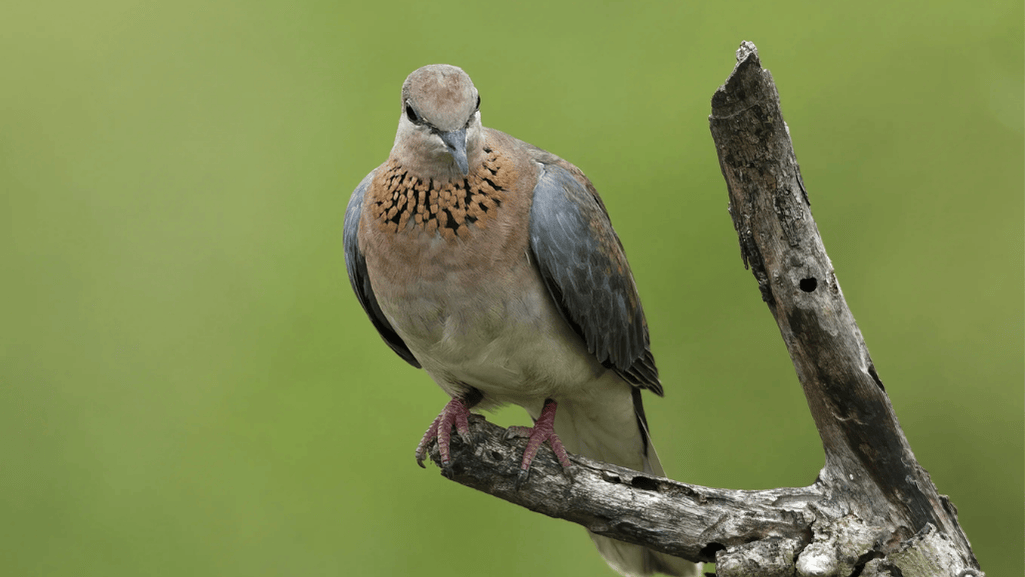 Turtur afer typically forages on the ground or at low vegetation, picking up seeds, grains and berries. During the wet season it concentrates on seeds and fruit when they are abundant; in drier months it broadens its diet to include insects and other invertebrates to meet nutritional needs.
Turtur afer typically forages on the ground or at low vegetation, picking up seeds, grains and berries. During the wet season it concentrates on seeds and fruit when they are abundant; in drier months it broadens its diet to include insects and other invertebrates to meet nutritional needs.
Seasonal Diet Variations and their Impact
The seasonal shift in food sources supports breeding and chick provisioning when resources are plentiful, and maintains adult condition during leaner times. Conserving seed‑bearing plants and preserving water sources can therefore improve local food availability and boost breeding success.
Season Primary diet components Adaptive foraging behavior
Wet season Seeds, fruit Forages along forest edges and grassland margins where seeds and fruit fall
Dry season Invertebrates, remaining seeds Expands foraging area to include open ground and dusty tracks to find insects
Behavioral Traits of Turtur Afer
Beyond diet, Turtur afer shows social behaviors typical of many doves: soft purring vocalizations for contact and courtship, tendency to form pairs during the breeding season, and occasional gatherings at reliable water or feeding sites.
Key behavioral notes
– Monogamous pairs: adults commonly form pairs and cooperate in nest building and chick rearing.
– Communication: uses a series of coos and purrs (contact and mating calls).
– Social foraging: may gather at water sources and productive feeding areas, which aids information exchange and predator vigilance.
Practical conservation note: planting native seed‑producing shrubs and providing undisturbed water points can help sustain local dove populations, especially through dry seasons when natural resources dwindle.
Predators and Threats: The Fight for Survival
African Turtledove in its habitat
 The African Turtledove (Turtur afer) faces threats from natural predators and human activities across parts of its range. Understanding these pressures—predation, disease, habitat loss and unsustainable hunting—is essential to design effective conservation responses and support remaining populations.
The African Turtledove (Turtur afer) faces threats from natural predators and human activities across parts of its range. Understanding these pressures—predation, disease, habitat loss and unsustainable hunting—is essential to design effective conservation responses and support remaining populations.
Natural predators
Birds of prey such as hawks, falcons and other raptors hunt small doves regularly and are the primary natural predators of Turtur afer. Predation risk is highest near open foraging areas and at communal roosts; vigilance and quick flight help reduce losses but do not eliminate predator impacts.
Human‑driven threats
Habitat destruction: conversion of woodland, scrub and seed‑rich margins to agriculture or urban uses reduces available feeding and nesting habitat for the species.
Hunting pressure: in some regions legal and illegal hunting reduces local numbers and can impede recovery where pressure is sustained.
Disease: infections such as Trichomonas gallinae have been documented in Columbidae and can cause local mortality and population impacts; prevalence and effects on Turtur afer should be confirmed with regional disease surveys and BirdLife International reports.
Conservation status and population trends
Consult BirdLife International and the IUCN Red List for the latest assessment of Turtur afer; these organizations provide authoritative species accounts and country‑level trend data. Note that declines in many dove species across Eurasia and Africa have prompted concern, but specific decline percentages must be verified with primary sources before attribution to Turtur afer (country figures cited in older reports may refer to related turtle dove species).
Country trends (note: verify sources)
Reported declines for turtle‑type doves in parts of Europe and elsewhere have been dramatic in some datasets; consult BirdLife country accounts and national monitoring reports for validated numbers rather than relying on unsourced tables.
Conservation actions (recommended)
– Protect and restore habitats: safeguard woodland edges, riparian scrub and seed‑rich grassland margins that provide food and nesting cover.
– Regulate hunting: enforce existing regulations and promote sustainable practices where hunting occurs.
– Disease monitoring and research: support surveillance for pathogens (e.g., Trichomonas) and fund health assessments of wild Columbidae.
– Research and monitoring: fund population surveys and tagging studies to map movements and identify key sites.
– Public outreach: raise awareness through local education campaigns and partner with BirdLife International and regional NGOs to promote conservation actions.
What you can do
– Report sightings to citizen‑science platforms (eBird) to improve population data.
– Support habitat restoration projects and conservation NGOs, including BirdLife International partners working in Africa.
– Advocate for stronger habitat protection and evidence‑based hunting regulations at the local level.
With coordinated action—local protection, research, disease monitoring and international cooperation—we can reduce threats to the African turtledove and help stabilize vulnerable populations.
Unveiling Turtur Afer: Nesting Habits and Chick Care
Turtur Afer Nesting Habits
The African turtledove builds simple, lightweight nests and typically places them in trees or shrubs where cover and nearby food are available. Pairs select sites that balance concealment from predators with proximity to feeding areas—sometimes in remnant woodland near farms or within suburban gardens.
Structure and Location of Nests
Nests are flimsy platforms of twigs and plant debris lined with leaves. They are usually sited low to mid‑height in vegetation (relative to surrounding cover) rather than on the ground, which reduces predator access and keeps chicks close to food sources.
Parental Roles in Rearing Young Doves
Both parents share nesting duties: constructing the nest, incubating eggs, and feeding chicks. Cooperative care increases chick survival, with adults taking turns incubating and delivering crop milk and regurgitated seeds to the young.
Nesting aspects (overview)
| AspectDetail | |
| Nest location | Varies from woodland edges and riparian scrub to gardens and farm hedgerows |
| Construction material | Twigs, leaves, and small plant debris |
| Parental role | Both parents involved in incubation and chick feeding; pairs cooperate in rearing |
| Chick development | Dependent on nest security and parental investment; fledging times and clutch size vary regionally (see species accounts) |
How to help nest success: retain native shrubs and low trees, avoid heavy pruning during the breeding season, provide water sources, and limit disturbance near known nest sites. For precise clutch sizes, incubation periods and fledging times, consult regional field guides and BirdLife International species accounts.
Iconic Imagery: The African Turtledove in Popular Culture
The African turtledove has long been a gentle symbol in art and literature, often representing peace, love and fidelity. As a familiar dove in many regions, its graceful form and soft calls have made it a recurring motif from natural history plates to contemporary wildlife photography.
Historic and contemporary depictions
Most historical depictions of turtledoves appear as detailed illustrations and engravings in 18th–19th century natural history works; later, photographs and decorative objects (sculptures, ceramics) captured the bird’s delicate profile for collectors and artists. Notable natural history illustrators—such as Edward Lear and others—recorded many dove species, and museum and library collections hold a number of these prints (consult institutional catalogs for exact attributions).
Relatives and cultural roles
Closely related birds like the Barbary dove and various collared doves have their own cultural roles and appear frequently in decorative art and symbolism. Across cultures, doves (including Turtur afer and related species) are commonly used as emblems of peace and seasonal renewal in poetry, religious art, and popular iconography.
Why it matters
These cultural representations raise public awareness and affection for the species, which can support conservation. When referencing historical percentages or counts of artworks, consult reliable catalogues or museum records rather than unsourced figures.
Closer Look: Distinctive Features of Turtur Afer
Turtur afer physical characteristics
A closer look at the African turtledove reveals a compact, well‑camouflaged bird whose form and coloration suit life in woodland and savanna habitats. Its body plan—stocky body, rounded wings and moderately long tail—supports short, quick flights between perches and efficient ground foraging for seeds.
Plumage Patterns and Coloration
The plumage of Turtur afer consists of muted browns and greys with subtle mottling that breaks up its outline against leaf litter and scrub. Feathers on the back and wings often show fine patterning that provides cryptic camouflage; underparts are paler. These feathers not only give the bird its understated beauty but reduce visibility to predators while foraging on the ground.
Anatomy of the African Turtledove: From Bill to Tail
The bill of Turtur afer is short and stout—well suited to picking seeds and small fruit—while its wings are rounded for maneuverability rather than sustained long‑distance flight. The tail is moderately long and used for steering and quick directional changes during escape flights. Overall form and feather arrangement are adapted to a mix of ground feeding and short flights between cover.
ID features (quick reference)
- Compact body with rounded wings and a medium‑length tail.
- Subtle, mottled brown and grey plumage—excellent camouflage among leaf litter and scrub.
- Short, stout bill adapted for seeds and small fruit.
- Soft purring call often heard before the bird is seen.
Interactions with Other Species: Coexistence in the Ecosystem
Turtur afer plays an ecological role as a seed consumer and disperser: by consuming fruits and seeds and moving across the landscape it can contribute to plant recruitment and variety. In mixed dove communities (for example with blue‑headed wood‑doves and tambourine doves), acoustic signals and subtle differences in calls help reduce confusion and structure local interactions.
Ecological notes
Species interactions (overview)
| SpeciesInteraction typeImpact on ecosystem | ||
| Turtur afer | Seed consumption and dispersal | Enhances plant variety and aids regeneration |
| Sympatric doves | Acoustic partitioning | Reduces competition and aids species coexistence |
Photographs and labeled diagrams (if included in the article) should show feather detail, tail shape and wing form with alt text describing these key ID features. For precise measurements (wing chord, tail length, bill dimensions) and regional variation in plumage, consult regional field guides and BirdLife International species accounts.
Conclusion
Our review of Turtur afer highlights both the species’ quiet charms and the conservation concerns it faces. We’ve summarized key aspects of its behavior, diet, nesting, and habitat, and shown how the African turtledove appears in culture as a symbol of peace and fidelity.
Protecting the mosaic of habitats that support Turtur afer—woodland edges, riparian scrub, seed‑rich margins and safe water sources—is central to maintaining healthy populations. Continued research on disease, population trends and movements, together with site protection and community engagement, will help ensure the species’ song remains part of Africa’s soundscape.
FAQ
What distinctive features identify Turtur afer?
Look for a compact dove with muted, mottled plumage, a short stout bill and a soft purring call; these traits help distinguish it from similar species in the field.
Where is it commonly found and how does it adapt?
Turtur afer is recorded across sub‑Saharan Africa in woodland‑savanna mosaics, riparian scrub and farm margins; it adapts by using a range of habitats and shifting foraging patterns seasonally.
What does it eat?
Primarily seeds and fallen fruit, supplemented by invertebrates when seeds are scarce—seasonal flexibility in food use supports breeding and survival.
What are the main conservation challenges?
Habitat loss, unsustainable hunting in some regions, and disease are the key threats. Consult BirdLife International and the IUCN Red List for up‑to‑date status and country‑level trends.
How you can help: report sightings to citizen science platforms (eBird), support habitat restoration projects, and back conservation organizations such as BirdLife International working on dove and habitat conservation.
